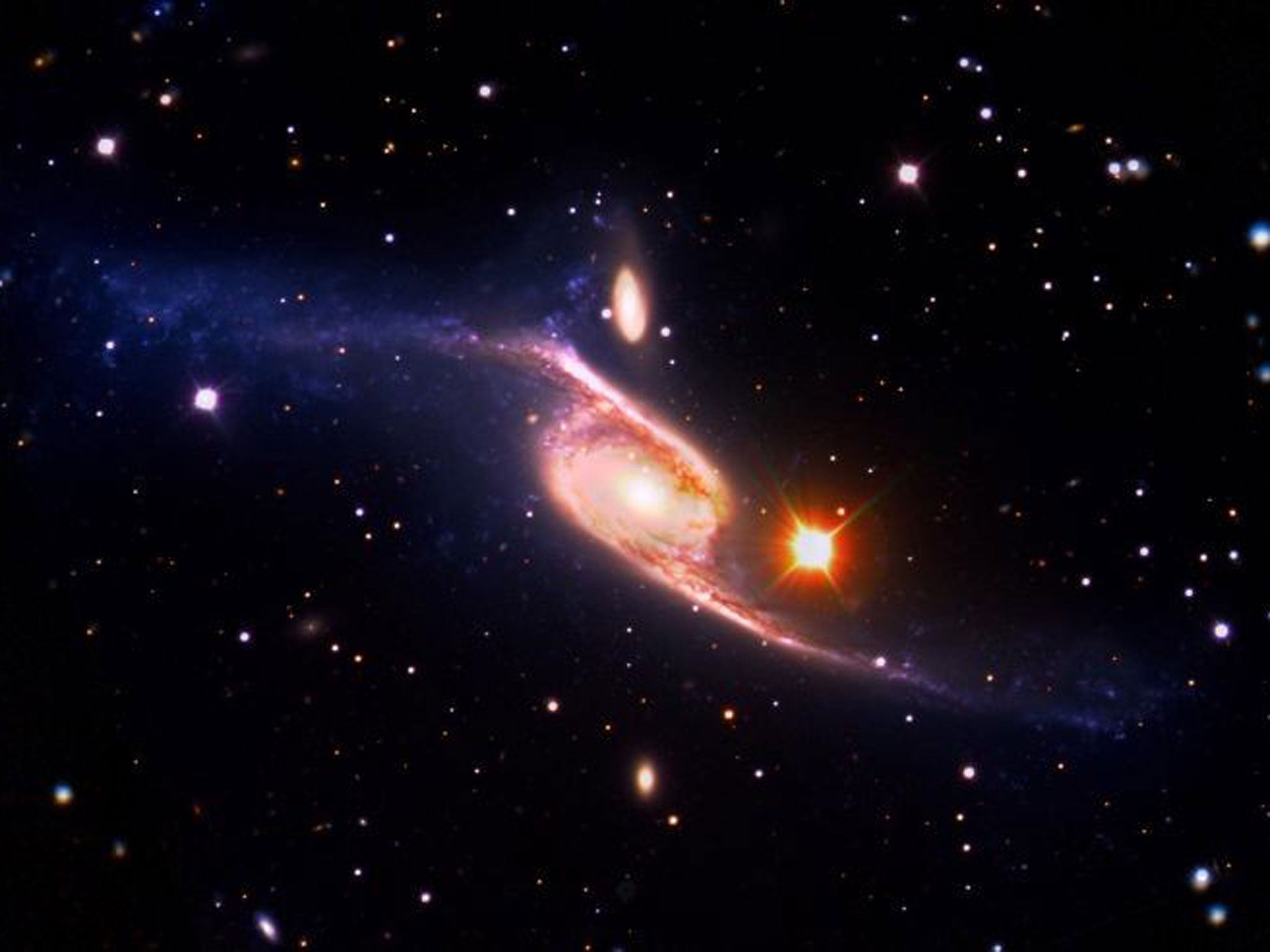Team of astronomers discover largest known spiral galaxy - that's five times the size of the Milky Way - by accident
NGC 6872, is the biggest spiral galaxy seen yet

Your support helps us to tell the story
From reproductive rights to climate change to Big Tech, The Independent is on the ground when the story is developing. Whether it's investigating the financials of Elon Musk's pro-Trump PAC or producing our latest documentary, 'The A Word', which shines a light on the American women fighting for reproductive rights, we know how important it is to parse out the facts from the messaging.
At such a critical moment in US history, we need reporters on the ground. Your donation allows us to keep sending journalists to speak to both sides of the story.
The Independent is trusted by Americans across the entire political spectrum. And unlike many other quality news outlets, we choose not to lock Americans out of our reporting and analysis with paywalls. We believe quality journalism should be available to everyone, paid for by those who can afford it.
Your support makes all the difference.A spiral galaxy system that spans more than 522,000 light-years has been identified by a team of astronomers.
The spectacular spiral galaxy, NGC 6872, is the biggest yet seen.
Astronomers earmarked the galaxy using archival data taken from Nasa's Galaxy Evolution Explorer (Galex) satellite.
NGC 6872 ranked among the biggest stellar systems for decades, but the new analysis has now crowned it the largest known spiral.
The discovery indicates that the galaxy is five time the size of the Milky Way galaxy.
The team of astronomers say that a comparatively recent collision with another galaxy could be causing one of the outer arms of the spiral to spawn fresh stars that may eventually create a new galaxy.
The team of astronomers from Brazil, Chile and the US were led by lead scientist Rafael Eufrasio who presented the findings on Thursday at the American Astronomical Society meeting in Long Beach, California.
"It's been known to be among the largest for two decades, but it's much larger than we thought," explained Mr Eufrasio.
"The galaxy that collided with the [central disc of NGC 6872] splashed stars all over the place - 500,000 light years away."
Mr Eufrasio told the BBC that the team had made the discovery by accident saying: "I was not looking for the largest spiral - it just came as a gift".
The Galex space telescope was designed to search for ultraviolet light that newly born stars put out, it was that feature that hinted that NGC 6872 was made much larger in size by a collision.
The two galaxies are located around 212 million light-years from Earth.
Join our commenting forum
Join thought-provoking conversations, follow other Independent readers and see their replies
Comments